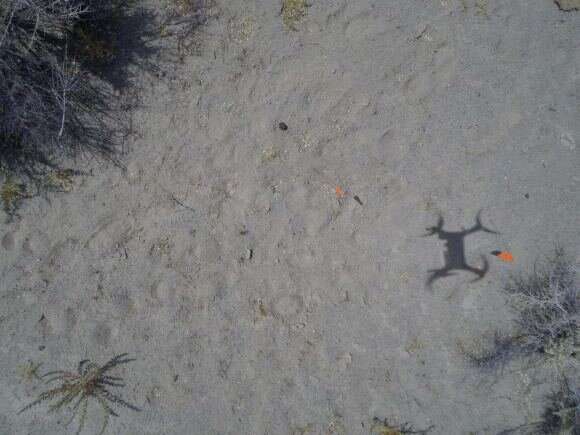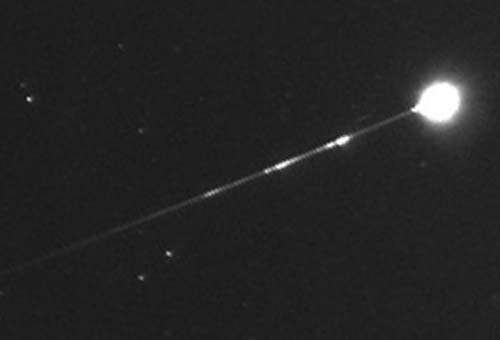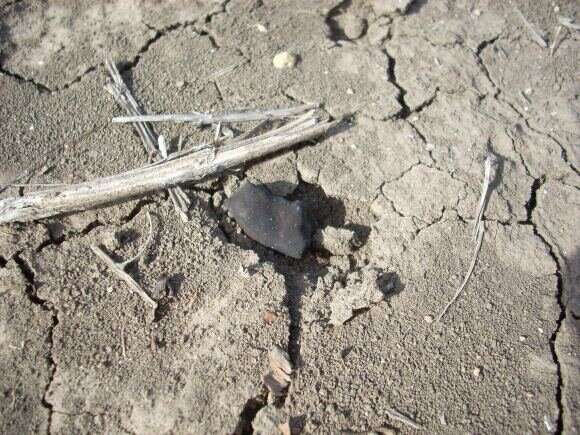Researchers have taught a drone to recognize and hunt down meteorites autonomously

Planetary scientists estimate that each year, about 500 meteorites survive the fiery trip through Earth's atmosphere and fall to our planet's surface. Most are quite small, and less than 2% of them are ever recovered. While the majority of rocks from space may not be recoverable due to ending up in oceans or remote, inaccessible areas, other meteorite falls are just not witnessed or known about.
But new technology has upped the number known falls in recent years. Doppler radar has detected meteorite falls, as well as all-sky camera networks specifically on the lookout for meteors. Additionally, increased use of dashcams and security cameras have allowed for more serendipitous sightings and data on fireballs and potential meteorite falls.
A team of researchers is now taking advantage of additional technology advances by testing out drones and machine learning for automated searches for small meteorites. The drones are programmed to fly a grid search pattern in a projected "strewn field" for a recent meteorite fall, taking systematic pictures of the ground over a large survey area. Artificial intelligence is then used to search through the pictures to identify potential meteorites.
"Those images can be analyzed using a machine-learning classifier to identify meteorites in the field among many other features," said Robert Citron of the University of California, Davis, in a recent paper published in published in Meteoritics & Planetary Science.
Citron and his colleagues have tested their conceptual drone setup several times, mostly recently in the area of a known 2019 meteorite fall near Walker Lake, Nevada. Their proof-of-concept meteorite classifier deploys a combination of "different convolution neural networks to recognize meteorites from images taken by drones in the field," the team writes.
While this specific test revealed a number of false positives for rocks previously unidentified, the software was able to correctly identify test meteorites placed by the researchers on the dry lake bed in Nevada. Citron and his team are very optimistic about the potential of their system, particularly in searching for small meteorites and finding them in remote regions.
Citron told Universe Today the main challenge for setting up the system was assembling a training dataset for the machine learning classifier.
"Since a future meteorite fall could occur on any terrain," he said via email, "the system needed an object detection algorithm trained with examples of many types of meteorites on various terrain types. To create a properly trained object detection network, thousands of example images are required."
Citron and colleagues assembled images of meteorites from the internet and added in "posed" photos of meteorites from their collection on various terrains. This allowed them to properly train the machine learning model to minimize the number of ordinary rocks flagged as false detections.
They then conducted ten test flights with a quadricopter drone in two locations of the projected Nevada strewn field, which is the area of expected meteorite falls based on trajectory data from four stations of the NASA Meteorite Tracking and Recovery Network, part of the Global Fireball Observatory.

"Fortunately, every field test we gain more data that we can incorporate into the dataset and use to retrain the object detection network and improve the accuracy," Citron said. "So, we will continue to try and improve the detection accuracy. Currently we need a better drone with a higher resolution camera."
Studying meteorites and knowing their origins helps scientists determine the composition of some 40 asteroid families in the asteroid belt, and also aids in understanding the early evolution of the solar system. The researchers said that the remote camera network information combined with being able to find and study freshly fallen meteorites is crucial in determining what asteroid family might have produced the meteoritic debris, and if it was from a particular collision event.
"If the meteorite can be recovered, a fireball's light curve and deceleration profile also provides information about how its kinetic energy is deposited in the Earth's atmosphere," the team wrote in their paper. "That information can be used to improve predictions at what altitude asteroids of this material type fragment that are big enough to cause damaging airbursts."
However, finding meteorites from an observed fall can be very difficult, since meteorites can be scattered over a wide area.
"Smaller falls are more frequent but deliver less meteorite fragments which are therefore harder to locate," Citron said. "It takes approximately 100 man-hours to find one meteorite fragment, so if we can improve on that we can sample more of these small falls and get better insight into the orbits and therefore source regions of incoming meteors."

Citron said that his team's drone system is intended for smaller falls that would not attract meteorite hunters. But the team's work has attracted the admiration of one noted meteorite hunter, Geoffrey Notkin of the Discovery Channel's "Meteorite Men."
"Dr. Citron's current work in this area is fascinating, especially his bold experiments with drones in real-world situations," Notkin said via email. "The most exciting concept here is the coupling of modern drones with machine learning that can recognize the visual characteristics of meteorites in situ. Given time, this methodology could eliminate some of the tedium of searching for freshly-fallen meteorites on foot and also facilitate recoveries in areas that are difficult or dangerous for humans to search in person."
Notkin added that he has long thought that drones and uncrewed aerial vehicles (UAVs) could play a useful role in meteorite recovery, and in fact, he carried out some early experiments in 2010 and 2011, but the drones and UAVs of the time were either not advanced enough or not available to non-military personnel.
But as technology continues to improve, Citron said, and "with a larger training dataset, updated classification scheme, and improved imaging hardware, machine learning coupled to an autonomous drone survey could prove a valuable tool for increasing the number of meteorite fragments found from fresh falls."
More information: Robert I. Citron et al, Recovery of meteorites using an autonomous drone and machine learning, Meteoritics & Planetary Science (2021). DOI: 10.1111/maps.13663
Source Universe Today





















